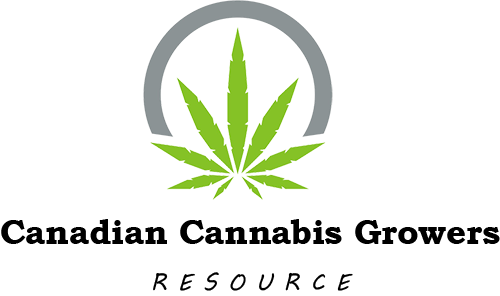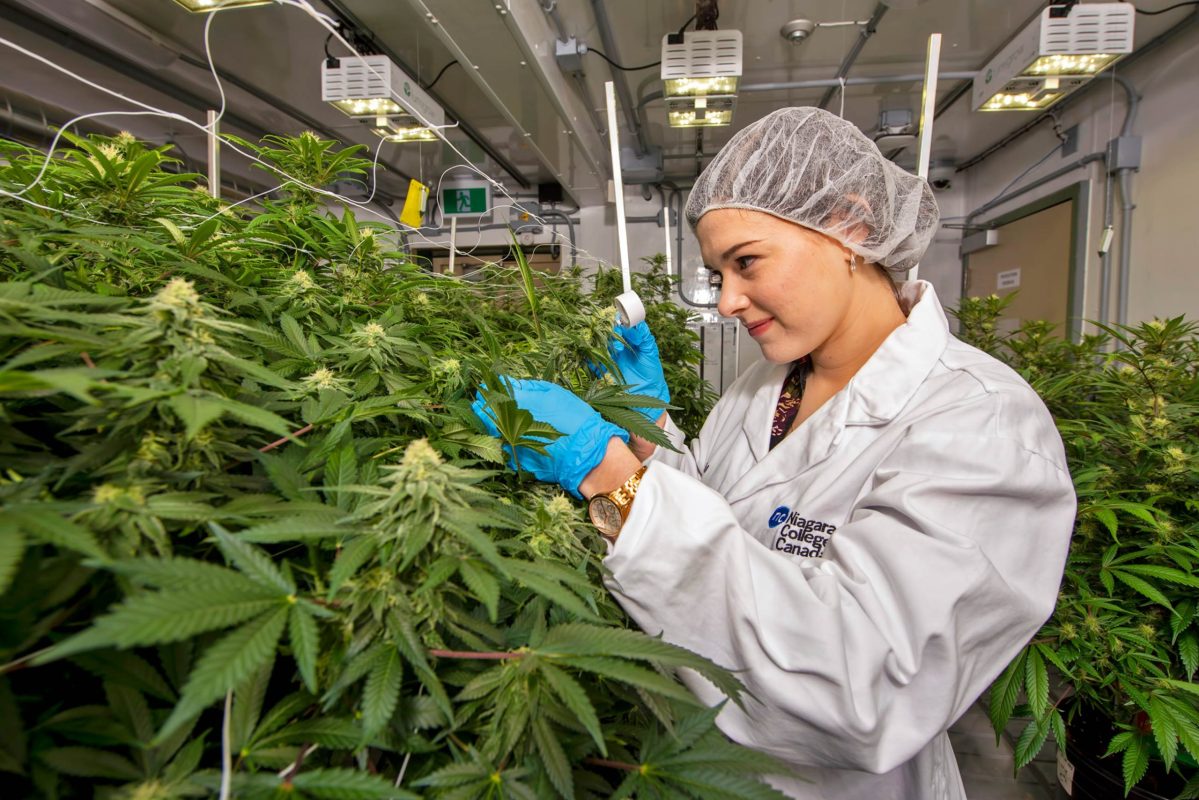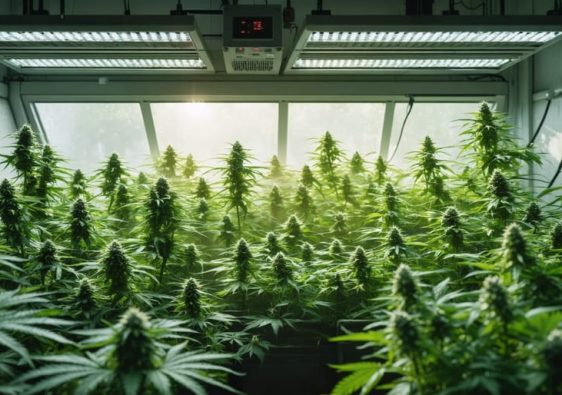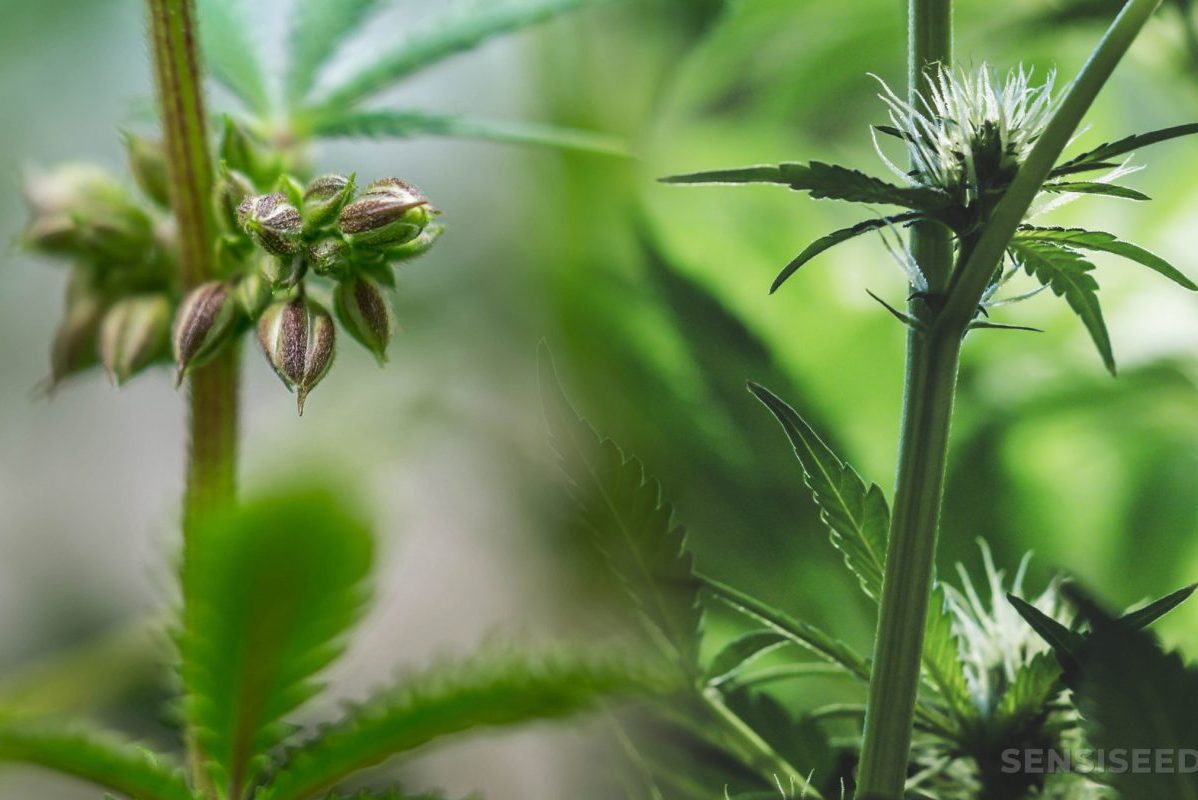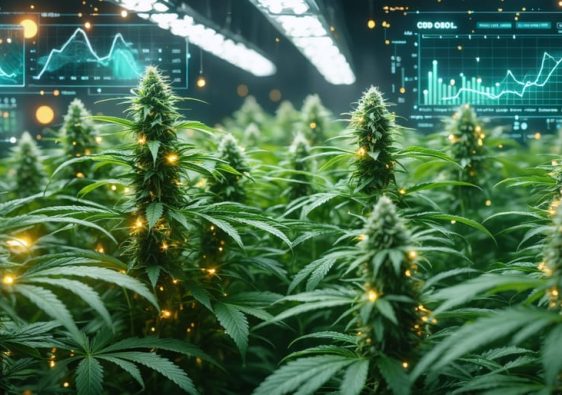Select CBD-rich cannabis strains with at least 10% CBD content and less than 0.3% THC to produce premium CBD oil from organic hemp. Master the art of controlled indoor cultivation by maintaining precise temperature (20-25°C) and humidity levels (40-50%) throughout the growing cycle. Calculate space requirements based on a minimum of 2 square feet per plant, ensuring proper ventilation and light distribution for optimal CBD production.
Understanding legal considerations for cannabis cultivation shapes every aspect of your operation, from seed acquisition to harvest protocols. Implement organic growing practices using living soil enriched with beneficial microorganisms and natural amendments to maximize cannabinoid profiles. Monitor and adjust pH levels between 6.0-6.5 in soil systems to optimize nutrient uptake and CBD development during the flowering phase.
Harvest timing critically impacts CBD concentration – collect when 70-90% of trichomes turn milky white for peak CBD levels. Document every step of your cultivation process, from germination to final processing, creating a reproducible system that consistently yields high-CBD plants suitable for oil extraction. Focus on stress-free growing environments through proper training techniques, including LST (Low-Stress Training) and strategic defoliation to increase CBD-rich flower production.
Selecting High-CBD Cannabis Strains
Popular CBD-Rich Strains in Canada
When selecting strains for CBD oil production in Canada, understanding cannabis seed genetics is crucial for success. Several CBD-rich strains have proven particularly successful in the Canadian climate and market.
Charlotte’s Web remains a cornerstone strain, famous for its high CBD content (up to 17%) and minimal THC levels (under 0.3%). This strain thrives in both indoor and greenhouse environments across Canada, making it an excellent choice for year-round cultivation.
Cannatonic is another popular option, especially in British Columbia and Ontario, offering a balanced CBD:THC ratio that typically ranges from 2:1 to 20:1. Its adaptability to various growing conditions makes it ideal for both newcomers and experienced cultivators.
ACDC has gained significant traction among Canadian growers, particularly for its impressive CBD content reaching up to 20%. This strain performs well in controlled indoor environments and requires moderate expertise to maximize yields.
Harlequin, with its reliable 5:2 CBD:THC ratio, has become increasingly popular in the Prairie provinces due to its resilience and consistent yields. It’s particularly suitable for greenhouse cultivation during Canada’s shorter growing season.
For novice growers, CBD Cream & Cheese offers a more forgiving growing experience while maintaining desirable CBD levels around 12%. Its robust nature and resistance to common pests make it an excellent starting point for CBD oil production.
Understanding CBD:THC Ratios
Understanding the CBD:THC ratio in your cannabis plants is crucial for successful CBD oil production. These ratios represent the balance between the two main cannabinoids and directly influence the effects and therapeutic potential of your final product. High-CBD strains typically feature ratios like 20:1 or 18:1 (CBD:THC), making them ideal for medicinal use while minimizing psychoactive effects.
When selecting strains for CBD oil production, look for genetics that consistently produce CBD levels above 12% with THC levels below 0.3%. Popular Canadian varieties like Charlotte’s Angel and Candida CD-1 are excellent examples of high-CBD cultivars. Remember that environmental factors and growing conditions can influence these ratios, so maintaining optimal growing conditions is essential for achieving desired cannabinoid profiles.
Regular testing throughout the growing cycle helps monitor cannabinoid development. While plants are maturing, you can send samples to licensed Canadian testing facilities to confirm your crop’s CBD:THC ratios. This ensures your final product meets both your personal goals and complies with Canadian regulations regarding CBD oil production.
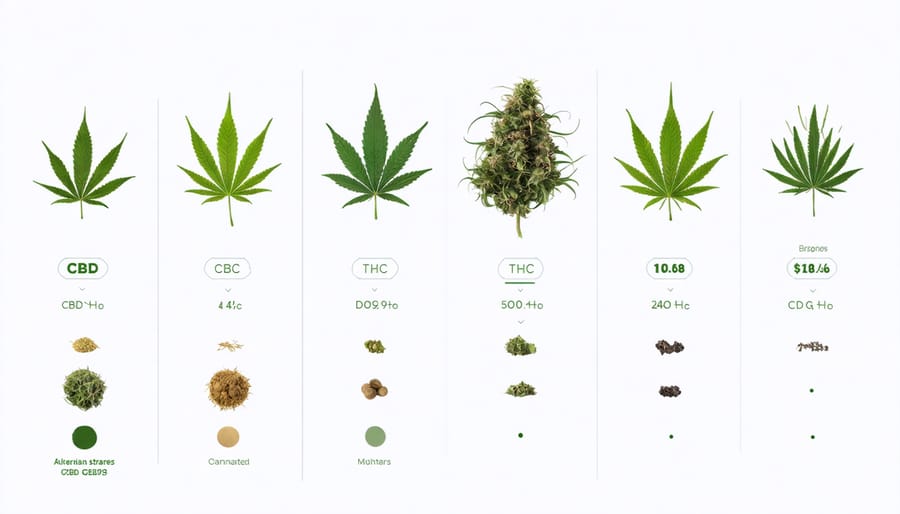
Setting Up Your Growing Environment
Indoor vs. Greenhouse Cultivation
When it comes to cultivating CBD-rich cannabis, growers typically choose between indoor and greenhouse setups, each offering distinct advantages. Indoor cultivation provides complete environmental control, making it ideal for year-round production in Canada’s variable climate. With indoor growing, you can fine-tune everything from humidity to temperature, and growing with LED lights has made it more energy-efficient than ever.
Greenhouse cultivation combines the best of both worlds, harnessing natural sunlight while offering protection from harsh weather conditions. This method typically results in lower operating costs and can produce larger yields due to the sun’s full spectrum of light. However, greenhouses require more initial investment in infrastructure and may need supplemental heating during colder months.
Indoor pros include precise environmental control, year-round growing capability, and enhanced security. The main drawbacks are higher energy costs and limited growing space. Greenhouse advantages include reduced energy consumption, larger potential yields, and more sustainable practices. Challenges include seasonal limitations and less precise environmental control.
For Canadian growers, the choice often comes down to location and scale. Those in urban areas typically opt for indoor setups, while rural growers with more space might prefer greenhouse cultivation. Both methods can produce high-quality CBD-rich cannabis when properly managed, so consider your specific circumstances and resources when making your decision.
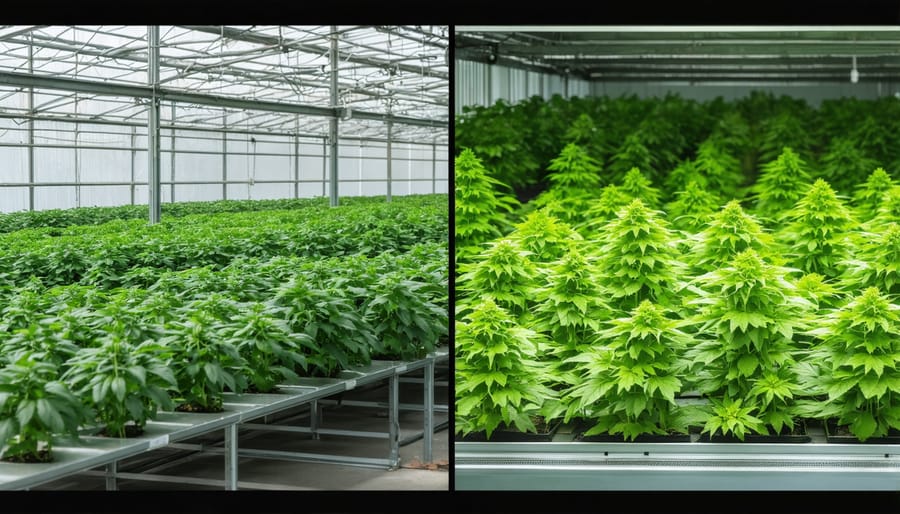
Climate Control Essentials
Creating the perfect environment for CBD-rich cannabis starts with mastering three crucial elements: temperature, humidity, and airflow. During the vegetative stage, maintain temperatures between 20-28°C (68-82°F), while flowering plants prefer slightly cooler conditions around 18-26°C (65-79°F). Remember, Canadian winters can challenge indoor growers, so invest in reliable heating systems and insulation.
Humidity control is equally vital, with young plants thriving in 65-70% relative humidity. As your plants mature, gradually reduce humidity to 40-50% during flowering to prevent mold and mildew issues. This is particularly important in Canada’s varied climate zones, where outdoor humidity can fluctuate dramatically.
Proper ventilation serves multiple purposes: it strengthens stems, prevents pest issues, and maintains optimal CO2 levels. Install oscillating fans to create gentle air movement and ensure your exhaust system changes the grow room air completely every 3-5 minutes. For Canadian growers dealing with temperature extremes, consider using intake fans with carbon filters to maintain clean, fresh air while managing heat.
Monitor these conditions using a digital thermometer/hygrometer combination device, and adjust as needed. Remember that maintaining stable conditions is often more important than hitting perfect numbers – sudden environmental changes can stress your plants and reduce CBD production.
Cultivation Techniques for Maximum CBD Production
Nutrient Requirements
CBD-rich cannabis plants require careful nutrient management to achieve optimal CBD production. During the vegetative stage, focus on nitrogen-rich nutrients with an NPK ratio of approximately 3-1-1. As your plants transition to flowering, gradually shift to a phosphorus and potassium-heavy feeding schedule (NPK 1-3-2) to support bud development and CBD synthesis.
Start with quarter-strength nutrients and gradually increase to full strength while monitoring your plants for signs of deficiency or toxicity. A typical feeding schedule includes:
Vegetative Stage (Weeks 1-4):
– Week 1: 2ml/L base nutrients
– Weeks 2-4: 4ml/L base nutrients + 1ml/L CalMag
Flowering Stage (Weeks 5-9):
– Weeks 5-7: 4ml/L bloom nutrients + 2ml/L CalMag
– Weeks 8-9: 2ml/L bloom nutrients (flush final week)
Incorporating sustainable growing practices like organic amendments can enhance your soil’s nutrient profile naturally. Consider adding worm castings, bat guano, or composted material to create living soil that requires fewer synthetic nutrients.
Maintain pH between 6.0-6.5 for soil and 5.5-6.0 for hydroponic systems to ensure optimal nutrient uptake. Always test your water quality and adjust accordingly, as hard water can affect nutrient availability and plant health.
Training Methods
Training your CBD cannabis plants is essential for maximizing yields and promoting optimal CBD production. Several effective techniques can help you achieve better results while maintaining plant health throughout the growing cycle.
Low-stress training (LST) involves gently bending and securing branches horizontally to create an even canopy. This technique allows light to reach more bud sites and promotes the development of multiple main colas. Start LST during the vegetative stage when stems are still flexible, using soft plant ties or garden tape to avoid damaging the branches.
The Screen of Green (SCROG) method, which utilizes trellis training methods, helps distribute growth evenly and supports heavy buds during flowering. Install a screen about 30cm above your plants and gently weave branches through the mesh as they grow.
Topping involves cutting the main stem to create two new growth tips, encouraging bushier growth and multiple main colas. Perform this technique when your plant has developed 4-5 nodes, making a clean cut just above the fourth node.
For CBD-rich strains, avoid high-stress training techniques that might trigger excessive THC production. Focus on gentle, consistent training methods that maintain plant stability while maximizing light exposure to bud sites. Remember to monitor your plants closely after implementing any training technique, allowing time for recovery between adjustments.
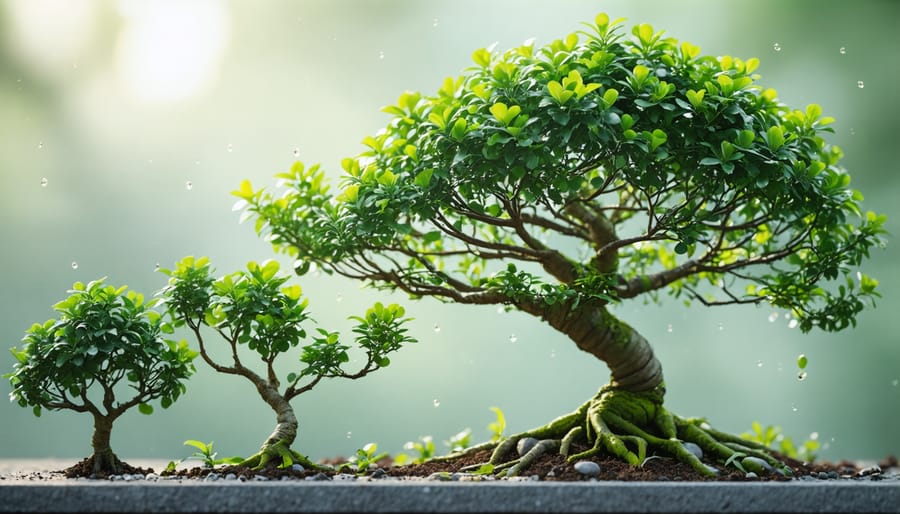
Stress Management
Growing CBD-rich cannabis requires careful attention to plant health and stress management. While cannabis is generally resilient, various environmental factors can trigger stress responses that may reduce CBD content or overall yield. Common stressors include temperature fluctuations, improper lighting, nutrient imbalances, and pest infestations.
To prevent stress-related issues, maintain consistent growing conditions with temperatures between 20-25°C and relative humidity around 40-50% during flowering. Watch for early warning signs like leaf discoloration, wilting, or unusual growth patterns. If you notice yellowing leaves, check your nutrient levels and pH balance immediately, as these are often the first indicators of plant stress.
Light stress is particularly crucial for CBD production. While cannabis needs intense light, too much can cause bleaching or leaf burn. Position your lights at the recommended distance and adjust as plants grow. During hot Canadian summers, consider additional ventilation or cooling systems to prevent heat stress.
Pest management should focus on prevention through clean growing practices and regular monitoring. Implement an integrated pest management (IPM) approach using natural predators and organic pesticides when necessary. Remember that stressed plants are more susceptible to pest infestations and diseases.
Building a support network within your local growing community can provide valuable insights for managing stress-related issues. Many experienced growers are happy to share their knowledge about regional-specific challenges and solutions.
Harvesting and Processing for CBD Oil
Harvest Timing Indicators
Determining the right time to harvest your CBD-rich cannabis plants is crucial for maximizing cannabinoid content. The most reliable indicators combine visual inspection with careful timing. Start by monitoring your trichomes using a jeweler’s loupe or digital microscope – these tiny, mushroom-shaped crystals tell you exactly when your plants are ready.
For CBD-rich strains, aim to harvest when 70-90% of the trichomes have turned from clear to milky white. Unlike THC-focused cultivation, you don’t want to wait for amber trichomes, as CBD levels typically peak earlier in the maturation process. Keep an eye on your plant’s pistils (the hair-like strands) as well; they should have mostly turned from white to orange or reddish-brown.
Calendar timing can help guide you, but don’t rely on it exclusively. Most CBD strains reach peak harvest between 8-10 weeks after flowering begins, though this varies by variety. Monitor your plants’ overall appearance – mature plants will have slightly yellowing leaves, and the buds will feel firm when gently squeezed.
Take notes on your local growing conditions and timing, as Canadian seasons can affect harvest windows. Morning harvests are ideal, as this is when CBD concentrations are typically highest. Remember, rushing the harvest can significantly impact your final CBD content, so patience and careful observation are your best tools.
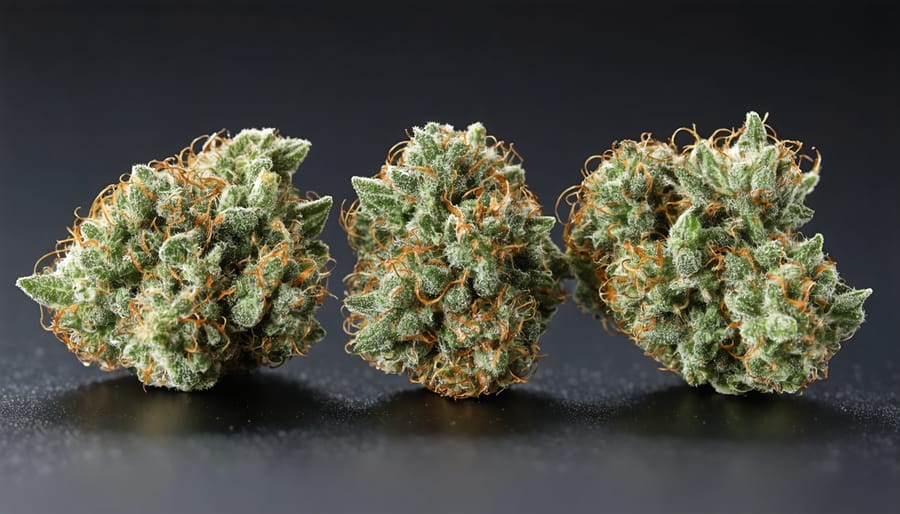
Post-Harvest Handling
Proper post-harvest handling is crucial for producing high-quality CBD oil. After harvesting your cannabis plants, begin the drying process immediately to prevent mold and preserve cannabinoid content. Start by trimming larger fan leaves and hanging branches upside down in a dark room with controlled temperature (18-21°C) and humidity (45-55%).
Your drying space should have good air circulation but avoid direct fans on the buds. This initial drying phase typically takes 7-10 days. You’ll know the branches are ready for the next step when smaller stems snap cleanly rather than bend.
The curing process is where the magic happens for CBD preservation. Once dried, trim the buds and store them in airtight glass jars, filling them about 75% full. Place the jars in a cool, dark location and “burp” them daily for the first week by opening the lids for 5-10 minutes. This releases excess moisture and allows fresh air exchange.
Continue curing for at least 2-4 weeks, reducing jar burping to once every few days. The longer you cure, the better the final product will be for CBD oil extraction. Monitor your buds closely during this period for any signs of mold or unusual odors, which could indicate improper moisture levels.
For optimal CBD preservation, maintain storage temperatures between 15-20°C and relative humidity around 62%. This careful attention to post-harvest handling ensures your final CBD oil will be of the highest possible quality.
Quality Testing and Storage
Testing your CBD oil’s quality and maintaining proper storage conditions are crucial steps in ensuring your final product remains potent and safe for consumption. In Canada, licensed testing facilities can analyze your CBD oil for potency, contaminants, and overall quality. While professional testing is recommended, you can also use at-home testing kits to get a general idea of CBD concentration, though these results aren’t as accurate as lab testing.
When submitting samples for testing, ensure you’re working with a Health Canada-approved laboratory. They’ll typically analyze for CBD and THC content, terpene profiles, heavy metals, pesticides, and microbial contamination. Request a Certificate of Analysis (COA) for your records, which documents all test results and helps verify your product’s quality.
Proper storage is equally important for maintaining CBD oil quality. Store your oil in dark glass bottles or opaque containers to protect it from light degradation. Amber or cobalt blue glass bottles are ideal as they filter out harmful UV rays. Keep your CBD oil in a cool, dry place with a consistent temperature between 15-20°C. Avoid storing in areas prone to temperature fluctuations like near windows or heating vents.
The shelf life of properly stored CBD oil typically ranges from 12-24 months. However, exposure to heat, light, or air can significantly reduce this timeframe. Always seal containers tightly after use and consider using bottles with dropper caps to minimize air exposure. Check your oil regularly for signs of degradation such as clouding, separation, or unusual odours.
Label your containers with important information including production date, CBD concentration, and batch numbers. This practice helps track potency over time and ensures you’re using the product within its optimal timeframe. For commercial producers, maintaining detailed records is also a legal requirement under Canadian cannabis regulations.
Remember to rotate your stock using the first-in-first-out method and regularly check stored products for quality maintenance. Consider using humidity control packs in your storage area to maintain optimal conditions.
As we wrap up this comprehensive guide to CBD oil cannabis cultivation, remember that successful growing is a journey of continuous learning and adaptation. From selecting the right CBD-rich strains to maintaining optimal growing conditions, each step plays a crucial role in producing high-quality CBD oil. The key to success lies in maintaining consistent environmental controls, regular plant monitoring, and following proper nutrient schedules.
Whether you’re a home grower or scaling up for commercial production, always prioritize compliance with Canadian cannabis regulations and maintain detailed documentation of your growing process. Remember that different regions across Canada present unique challenges and opportunities for cultivation, so adapt these guidelines to your specific climate and growing setup.
Join local growing communities and stay connected with other CBD cultivators to share experiences and learn from each other. As the cannabis industry continues to evolve, staying informed about new cultivation techniques and technologies will help you improve your yields and CBD content.
Take time to experiment with different methods while keeping detailed records of what works best for your setup. Start small, perfect your process, and scale up gradually. Remember that quality always trumps quantity when it comes to CBD oil production.
Ready to begin your CBD cultivation journey? Start with proper planning, gather your supplies, and don’t hesitate to seek guidance from experienced growers in your area. Happy growing!
